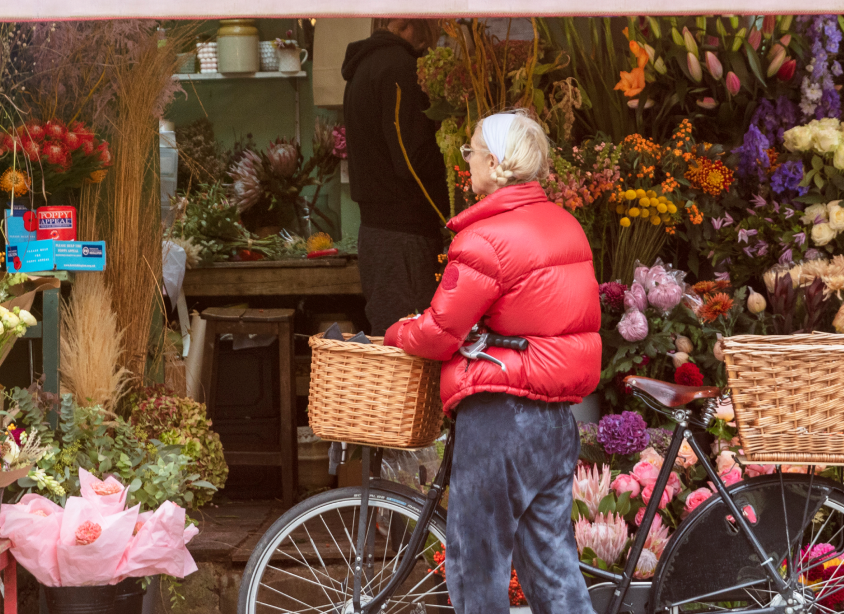
There’s loads to discover in Bayswater
Nestled between the bustle of the Edgeware Road and the calm of Hyde Park, Bayswater is a jewel-like enclave for the finer things in life for almost 200 years.
A tiny hamlet for centuries, it wasn’t until the mid 1800s when Bayswater became a quarter synonymous with quiet affluence when a huge push in housebuilding drew the upper classes to its sparkling new crescents and squares and leafy avenues lined with elegant villas and terraces.
A Victorian Idyl
Life in Bayswater was easy: homes were modern and luxurious, shopping was abundant with the city’s first department store, William Whiteley Limited, on fashionable Westbourne Grove, and Hyde Park gave coveted acres of green space for popular, healthful activities.
As London evolved during the twentieth century, Bayswater continued to change with it, appealing to more diverse communities with its proximity to central London and superior housing. William Whiteley’s was bought by Selfridges in the early 1900s, establishing it as simply Whiteley’s and a destination for serious shoppers that endured for decades.
Reflection
The whole of London received significant bomb damage during World War Two, and Bayswater was no exception. Very few streets were left unscathed with some areas completely destroyed, and the second half of the century saw communities focusing on recovery. Despite this, by the turn of the millennium, the area had become known for its vibrant restaurant and bar scene.

Bayswater Today
Great change has come to Bayswater over the past decade, with the area receiving significant investment from some of the world’s most luxurious brands, and developers bringing new life to the now-closed Whiteley’s site. With exclusive private residences, the UK’s first Six Senses hotel and select restaurants and retailers, Bayswater is fast returning to its cherished status of the jewel of central west London.
Multi-cultural Bayswater
Bayswater has become synonymous with rich multi-culturalism: in the late 1800s, it acquired the nickname of Asia Minor after the wealth of Indian produce available in its stores, a demand generated by the many military and political families living in the area after postings to south Asia. Greek and Jewish populations increased towards the end of the nineteenth century, leading to the building of both the stunning Greek Orthodox Saint Sophia Cathedral, or Hagia Sophia (1882) and the New West End Synagogue (1879), now a national monument.
Today, Bayswater continues to be an area of destination, with restaurants and shops representing the diverse communities that call this quarter home – from Brazilian to Greek to Middle Eastern – lining these wide, bustling streets.

The Porchester Centre – London’s first spa
It’s no surprise that as a place known for its love of luxury, Bayswater was also where London’s first spa was founded. The spa began as a series of Turkish and Russian vapour baths, part of the ground-breaking Porchester Centre built in the 1920s with the intention of creating a civic centre unlike anything London. Alongside the baths, there were first and second class swimming pools, a reading room, vast assembly rooms and a public library. Today, the Porchester Centre is an iconic Grade 2* building, both inside and out, and the spa operates in rooms that still retain their beautiful art-deco features.

Location
Bayswater’s coveted location means that the best of London is mere minutes away, whichever direction you choose.
For high culture and luxury shopping, head south across Hyde Park – home to annual music festivals, Serpentine Gallery and 725 acres of fresh air – brings you to the Royal Albert Hall, one of the world’s most important music venues. A short walk further will take you to London’s impressive museum quarter with the Natural History Museum, Science Museum and Victoria & Albert Museum. And then there’s Harrods and Harvey Nichols’ and all the designer delights of Sloane Street.
For eclectic cool, choose west where a five minute bus-journey will find you browsing antiques or eating in world-famous restaurants and pubs of Portobello Road and Notting Hill. A little further and you’ll discover the secret joy of Holland Park.
Head east, and you’re met with an cornucopia of delights: Oxford Street and Bond Street for the capital’s best shopping, and the warrens of Soho and Fitzrovia for hidden bistros and bars and independent boutiques.
Retreat a little way north for Little Venice and the meandering Regents Canal, populated by beautiful residential barges and boats. From here you can follow the water to one of London’s other great green spaces, Regent’s Park, home to London Zoo, and beyond all the way to East London.